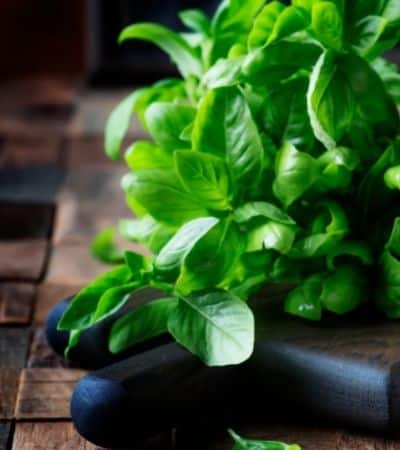I have grown up watching my neighbors grow apple trees in their backyard. I can say that they have a mini apple garden in their backyard. I have watched them plant those apple trees during fall, late winter, or spring.
So, out of curiosity, I asked them why they had been replanting them in those particular seasons of the year. Why not in summer or winter. So, they replied that these seasons are the best for planting an apple tree.
So, when is the best time to plant an apple tree?
Fall, late winter, and spring are the best time for planting an apple tree. During these seasons, the soil does not freeze in hardy zones 3 to 8. The weather is cold enough to provide the apple tree’s roots with the proper temperature.
Besides this, during fall, the apple trees generally stay in a dormant condition. During dormancy, the plant will be easy to replant and need less care. So, it is wise to plant the apple tree during these seasons.
Planting the tree at the best time is necessary for the healthy growth of the tree. That’s why I am sharing the ultimate guideline about the best time for planting the apple tree. So, let’s dig in deeper!

Table of Contents
Best time of planting an apple tree outside
Fall:
In most regions of North America, fall is the best season for planting apple trees. During fall, the soil is easy to manage. But avoid wet soil as it may harm the plant.
However, during winter, the plants are dormant. That’s why the plants get healthy growth. Moreover, you know that apple plants need cool weather to grow.
So during fall, the climate is not too hot. As a result, you can get the desired temperature for growing apples. Well, lastly, the apple trees are cheaper during fall. These benefits are superb, aren’t they?
Late winter:
In hardiness zones 7 or 8, late winter is the best time for planting an apple tree. Apple trees need cold weather to grow. But in these regions, the weather is not cold except during winter.

That’s why planting in late winter is the best time for these regions.
After the danger of the last frost date has passed, the soil will start to return to its normal state. Then you can plant it. The apple tree is a cold-loving plant.
So, during the last few days of the winter months, the cool weather can be helpful for the growth of the tree. Also, due to the melted ice, the soil would be easy to maintain.
Spring:
There is heavy frost in the hardiness zones 3 to 4. So due to heavy frost, the ice might be present during late winter. That’s why it’s better to wait till the spring. Once spring arrives, the soil will be ice-free, and you can plant the tree.
On the contrary, you can plant them during early spring if the winter is not that severe in your region. In those regions, early spring is preferable to late winter.
If you are planning to plant bare-root trees, then early spring is the best time.
Well, till now, I have talked about the best time for planting based on the season. How about I give some monthly details too!
So, here I am attaching a small chart that will tell you about the best time for planting and harvesting. So let’s check the chart!
| Plant | January, February, March, November, December. |
| Harvest | August, September, October, November. |
Best time to plant apple trees indoors

Well, you can plant the dwarf variety of apple trees indoors. So, you should know the best planting time for indoors also. If you want to grow the dwarf tree indoors, you can plant them anytime without any worries.
Since there is no frost danger inside the house, you can plant the trees in a container during winter.
Though there are no preferable times for planting the dwarf apple trees indoors, don’t forget the other growing conditions!
Like you should choose the season when your fruit tree can get enough sunlight!
Best planting time based on plant variety
There are two different forms of apple trees that you may notice while buying an apple tree from a local garden center or nursery. Either the trees are sold as bare-root trees or as potted trees.
Bare root trees:
Generally, bare-root trees are the trees that you have to buy without any soil attached to the rootstocks. They are grown outside in the garden soil.
So, you can plant the bare root trees during spring, fall, or late winter based on the temperature of your region.
Potted trees:
They are mainly dwarf size trees that you can plant indoors or outdoors too. So, as I have said earlier, you can plant the trees indoors anytime. Even in winter too! Potted trees even can do better during late spring or summer.

However, winter is preferable for planting these potted plants indoors or outdoors because of the plant’s dormant season. The potted plants are the established plants.
While you are planting the tree, all you have to remove the container. There is no need to remove the soil as the soil conditions are already better.
So you can see that the plant will grow in its previous soil environment, and there will be no shocking change.
That’s why during winter, there will be no harm to the plant except heavy frost.

Best time for buying an apple tree
Since you are buying a young apple tree for planting, you should order the tree at the proper time from garden centers or online stores. It’s better to order or buy the plant during summer. The fruit trees grow on an annual cycle.
So, it won’t be a problem to buy them during summer, even if you want to plant a tree in spring.

Besides that, if you buy the tree in summer, you will get many trees to choose the best among them. After summer, the planting season starts, and people rush to buy the plants.
So, you might not be able to get the best plant! Moreover, people living in hardiness zones 3 or 4 should order the trees before winter.
After winter, the dormant season of the trees is over, and then it becomes difficult for the seller to transfer the trees to the buyer.
Few last words for you!
There are many apple varieties, and the harvest timings are different for the different types of apple trees. But there is no variety restriction for planting apple trees.
So, you can plant the apple trees at those best times for planting that I have mentioned here. However, planting the trees at the best time doesn’t mean that they will grow automatically.
Plant the tree at the proper time and take care of the sunlight, soil type, water quantity, cooler temperatures, and all that an apple tree requires.
I hope the best time to plant an apple tree guide helped you to understand your query. You will be able to plant the tree at the perfect time and have a bountiful harvest!
You May Also Like:











































